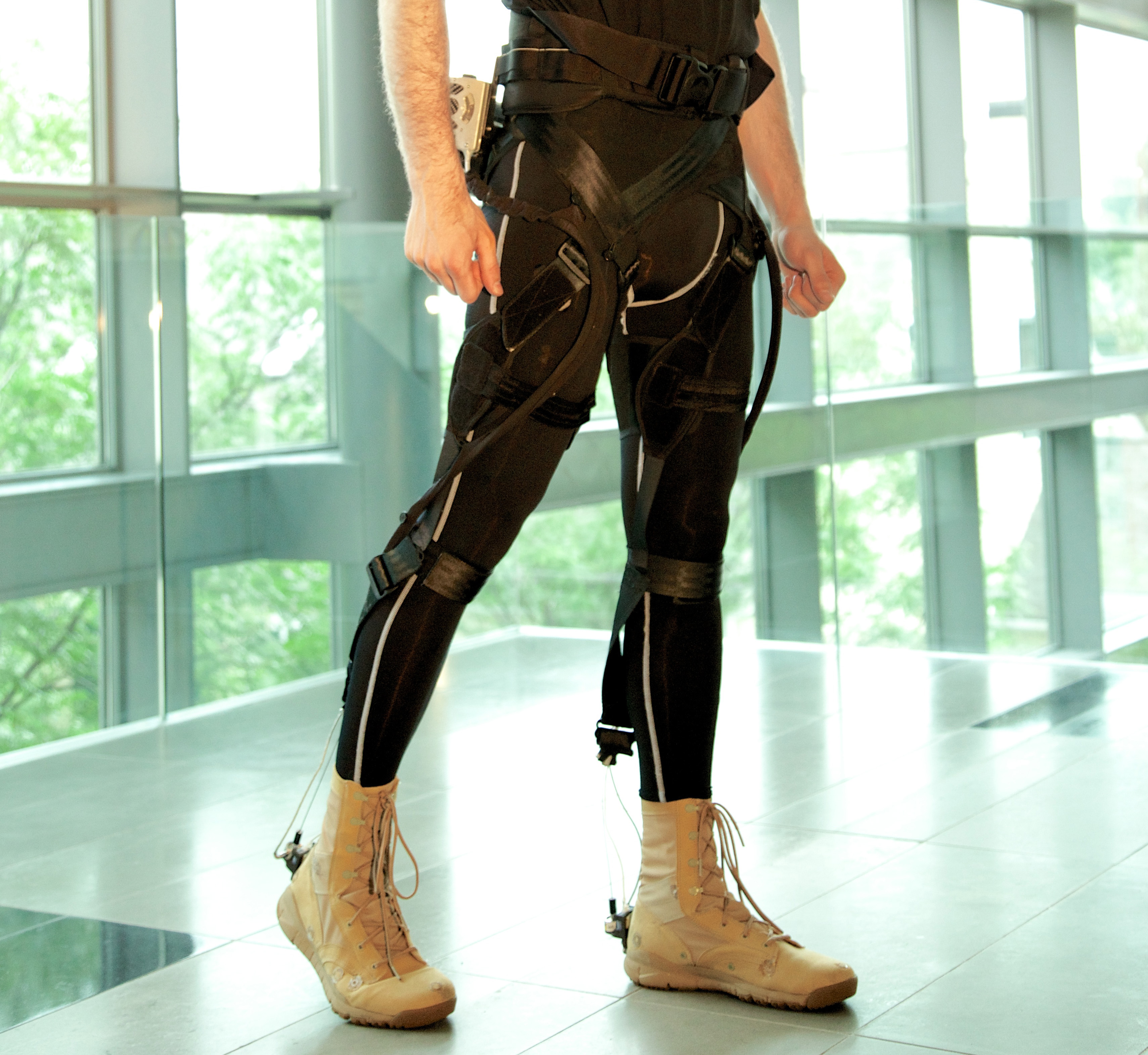
Harvard University has pushed its soft robot concept in strange directions, but an exploding robot? That takes the cake. A new three-legged, silicone-based variant of the robot is filled with methane and oxygen that, when jolted with electricity, explode and trigger violent pressure that pushes the limbs off the ground. As you'd imagine, the results weren't exactly timid during testing -- the example robot jumped over 30 times its body height, and it would have jumped higher if not for additional tubing holding it down in the lab. The power easily eclipses that of pure air, and could be vital to rescue robots or other public safety machines that could very literally leap to someone's aid. Don't anticipate exploding automatons on the streets anytime soon. We'll just be glad that, if they do arrive, they'll be trying to help us rather than kill us.
Filed under: Robots, Science
Comments
Via: Gizmag, New Scientist
Source: Wiley Online Library
 A team of engineers from Harvard University's Wyss Institute for Biologically Inspired Engineering have moved one step closer to a consumer version of a soft, assistive exosuit that could help patients with lower limb disabilities walk again. The Wys...
A team of engineers from Harvard University's Wyss Institute for Biologically Inspired Engineering have moved one step closer to a consumer version of a soft, assistive exosuit that could help patients with lower limb disabilities walk again. The Wys...
 A team of engineers from Harvard University's Wyss Institute for Biologically Inspired Engineering have moved one step closer to a consumer version of a soft, assistive exosuit that could help patients with lower limb disabilities walk again. The Wys...
A team of engineers from Harvard University's Wyss Institute for Biologically Inspired Engineering have moved one step closer to a consumer version of a soft, assistive exosuit that could help patients with lower limb disabilities walk again. The Wys...
 In theory, gene editing could eliminate genetic diseases by correcting the flaws in your DNA. However, there's one big obstacle: the current CRISPR technique has trouble modifying individual DNA letters. As most genetic conditions revolve around mu...
In theory, gene editing could eliminate genetic diseases by correcting the flaws in your DNA. However, there's one big obstacle: the current CRISPR technique has trouble modifying individual DNA letters. As most genetic conditions revolve around mu...
 Robotic surgery is no longer the stuff of science fiction. However, these robots can't really feel their way around -- the need for super-small mechanisms rules out existing approaches to touch. That's where Harvard researchers might come to save t...
Robotic surgery is no longer the stuff of science fiction. However, these robots can't really feel their way around -- the need for super-small mechanisms rules out existing approaches to touch. That's where Harvard researchers might come to save t...













